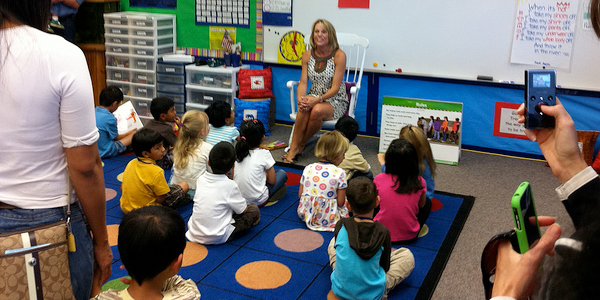
Cupertino public schools have a reputation for academic excellence and a large Asian American population. Two schools in the Cupertino Union School District, Faria and Murdock-Portal, scored 998 out of 1000 on the Academic Performance Index (API), a tie for first in the state of California. What is the Federal “No Children Left Behind” (NCLB) rating for the Cupertino Union School District? FAIL. Cupertino was listed as being in Program Improvement (PI), the federal equivalent of F. You might wonder, “how could this be?”
Phil Quon, the superintendent of the Cupertino School District, wonders the same:
I challenge anybody to come to Cupertino and say that we are a PI district.
What happened? Officials enforcing NCLB say that not enough poor students, Latino students, and students with disabilities achieved proficiency in English and Math. According to the Mercury News article reporting Cupertino school district situation, the rules for landing in PI involve having less than 67% of the student population or subgroups pass proficiency tests. Arun Ramanathan of the Education Trust-West, an advocacy group agrees that this rule is a good thing: “‘There’s a benefit to saying, ‘Folks, your students aren’t doing as well as they should be.'”
On the surface, that seems quite reasonable. If one third of a district’s students or of a major subgroup is not passing basic proficiency tests, I would think that district has a problem, even if the other two thirds end up going to Ivy League colleges. Especially if the other two thirds end up going to Ivy league colleges! But if you dig deeper, you have to wonder how fair that it is. If you have one student with disabilities at a school and he or she fails, that’s a 100% failure rate of that group. I am not sure if NCLB takes into account the size of each subgroup at a school, but it is true that if only one school fails in a school district, the whole district fails. As this excellent blog on the subject points out, that basically guarantees that larger school districts will fail. Cupertino had 2 out of 25 schools fail.
It’s hard to tell what effect this will have on the Cupertino Union School District. There are possible penalties associated with schools that receive with Title I funds (federal funds aimed toward schools with many low income students), but given housing prices and demographics in Cupertino, I doubt that there are many schools that are in that category. Since many Bay Area home shoppers base buying decision on individual schools API scores, I don’t think it will immediately cause changes in the Cupertino housing market. Still, FAIL is a weird label to hang on this district, and it certainly doesn’t bring much credibility to NCLB.
[Flickr Photo Credit: Sam Pullara]
- Excited
- Fascinated
- Amused
- Disgusted
- Sad
- Angry








